
RMS Olympic was a British ocean liner and the lead ship of the White Star Line's trio of Olympic-class liners. Olympic had a career spanning 24 years from 1911 to 1935, in contrast to her short-lived sister ships, Titanic and Britannic. This included service as a troopship during the First World War, which gained her the nickname Old Reliable. She returned to civilian service after the war, and served successfully as an ocean liner throughout the 1920s and into the first half of the 1930s, although increased competition, and the slump in trade during the Great Depression after 1930, made her operation increasingly unprofitable.

HMHSBritannic was the third and final vessel of the White Star Line's Olympic class of steamships and the second White Star ship to bear the name Britannic. She was the youngest sister of the RMS Olympic and the RMS Titanic and was intended to enter service as a transatlantic passenger liner. She was operated as a hospital ship from 1915 until her sinking near the Greek island of Kea, in the Aegean Sea, in November 1916. At the time she was the largest ship in the world in active service.
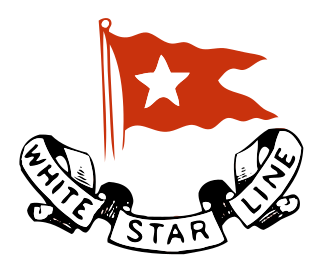
The White Star Line was a former British shipping line. Founded out of the remains of a defunct packet company, it gradually rose up to become one of the most prominent shipping companies in the world, providing passenger and cargo services between the British Empire and the United States. While many other shipping lines focused primarily on speed, White Star branded their services by focusing more on providing comfortable passages for both upper and lower class travellers.

Violet Constance Jessop was an Argentine woman of Irish heritage who worked as an ocean liner stewardess and nurse in the early 20th century. Jessop is most well known for having survived the sinking of both the RMS Titanic in 1912 and her sister ship the HMHS Britannic in 1916, as well as having been onboard the eldest of the three sister ships, the RMS Olympic, when it collided with the British warship HMS Hawke in 1911.
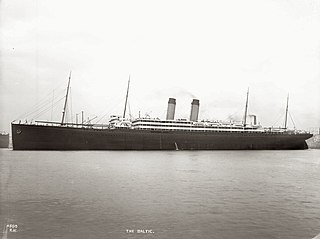
RMS Baltic was an ocean liner of the White Star Line that sailed between 1904 and 1932. At 23,876 gross register tonnage, she was the world's largest ship until May 1906. She was the third of a quartet of ships, all measuring over 20,000 gross register tons, dubbed The Big Four.

SS Nomadic is a former tender of the White Star Line, launched on 25 April 1911 in Belfast now on display in Belfast's Titanic Quarter. She was built to transfer passengers and mail to and from RMS Olympic and RMS Titanic. She is the only surviving vessel designed by Thomas Andrews who also designed those two ocean liners, and the last White Star Line vessel in existence today.

USS Zeppelin was a passenger liner launched in 1914 as SS Zeppelin by Bremer Vulkan, Bremen-Vegesack, Germany, for Norddeutscher Lloyd (NDL). Due to the First World War she never entered NDL service. She had a career after the war first under White Star Line control, then briefly as the troop ship USS Zeppelin, next as the Orient SN Co liner SS Ormuz and finally back with NDL as SS Dresden.

The Red Star Line was a shipping line founded in 1871 as a joint venture between the International Navigation Company of Philadelphia, which also ran the American Line, and the Société Anonyme de Navigation Belgo-Américaine of Antwerp, Belgium. The company's main ports of call were Antwerp in Belgium, Liverpool and Southampton in the United Kingdom and New York City and Philadelphia in the United States.
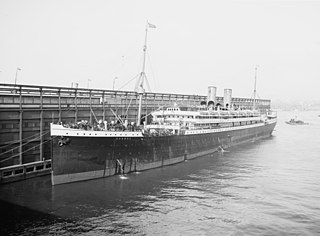
The SS Bremen, later renamed Constantinople and then King Alexander, was a German Barbarossa class ocean liner commissioned in 1897 by Norddeutscher Lloyd.

SS Medic was a steamship built by Harland and Wolff in Belfast for the White Star Line which entered service in 1899. Medic was one of five Jubilee-class ocean liners built specifically to service the Liverpool–Cape Town–Sydney route. The ship's name pertained to the ancient Persian region of Media and was pronounced Mee-dic.
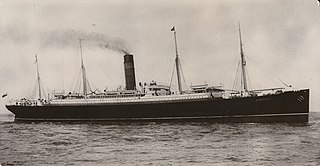
RMS Carpathia was a Cunard Line transatlantic passenger steamship built by Swan Hunter & Wigham Richardson in their shipyard in Wallsend, England.

The "Big Four" were a quartet of early-20th-century 20,000-ton ocean liners built by the Harland & Wolff shipyard for the White Star Line, to be the largest and most luxurious ships afloat. The group consisted of Celtic, Cedric, Baltic and Adriatic.

SS Lapland was a steam ocean liner built in Ireland for the Belgian Red Star Line, as Red Star's flagship, similar in appearance to the fellow liners SS Samland, SS Gothland and SS Poland, but far larger. She was a half sister to White Star Line's "Big Four." They were similar in many ways, such as the island bridge, 4 masts, 2 funnels. But Lapland had a less luxurious interior.

SS Doric was a British ocean liner operated by White Star Line. She was put into service in 1883. Built by the Harland and Wolff shipyards in Belfast, she was the sister ship of the Ionic which was put into service a few months earlier. Although the original purpose of the construction of the two ships was not known with certainty, both began their careers chartered by the New Zealand Shipping Co. which operated them on the route from London to Wellington.
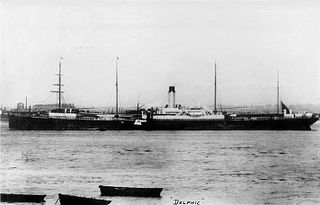
SS Delphic was an ocean liner of the White Star Line, built by Harland and Wolff in Belfast and completed on 15 May 1897. She worked the New Zealand trade. She was a fairly slow ship primarily intended for transporting emigrants and goods to New Zealand. Despite this, she made her first crossings on the New York route before joining the route to New Zealand. For twenty years, her service on this route was uneventful, with the exception of troop transport missions during the Second Boer War.

SS Coptic was a steamship built in 1881, which was successively owned by the Oceanic Steam Navigation Company, the Pacific Mail Steamship Company, and the Japanese Oriental Steam Ship Co. before being scrapped in 1926. She was filmed by Thomas Edison in 1897 in one of his early movies. The movie is currently stored in the Library of Congress, archive.org and other internet archives.

SS Cretic was an ocean liner built in 1902. She was operated by several shipping lines, all of which were part of the IMM Co., under several names in her career, which ended when she was scrapped in 1929.

The SS Cevic was a steam ship built by Harland and Wolff for the White Star Line for service initially in the North Atlantic. Later she was transferred to the Australia run. On the outbreak of the First World War she was sold to the Admiralty and converted to a dummy capital ship. Later she was transferred to the Royal Fleet Auxiliary. After the war she was sold to the Anglo-Saxon Petroleum Company.

The SS Georgic was a steam ship built by Harland and Wolff for the White Star Line to replace the SS Naronic which was lost at sea. Georgic was a cargo ship designed principally to carry livestock, at the time of entering service in 1895 she was the largest cargo ship in the world with a deadweight tonnage of 12,000 tons.




















